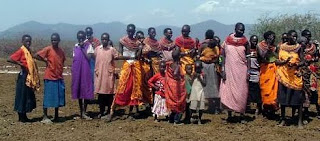
The Kenya Red Cross has described the hunger situation in Turkana County as dire and called for urgent food aid to the region.
In a report sent to its Nairobi headquarters, the local Red Cross office says the drought situation is “severe” with most of the vulnerable groups suffering from severe malnutrition
The report, availed to The Standard, reveals that most residents in the County have not received food aid since March 2011, forcing families to feed on carcasses of livestock and wild fruits.
“More than 6,000 people at Nakurio and Louwae village in Kerio division in Turkana central district, are the most hit by starvation require urgent food aid,” it added.
The situation has been caused by persistent drought that has hit the region in the past 12 months causing serious depletion of food and water in the region.
“The County has not received stable rainfall for long resulting in drying up of water points and a total decline in availability of food,” read the report.
Compiled by Turkana branch Chairman, Alexander Lama, and Coordinator Edward Edung Ethuro, the report indicates that 1,377 households are worst hit.
“The families that heavily rely on food aid are experiencing starvation and the worst hit are children, pregnant mothers, the sick and elderly,” they said.
A village Elder in Nakurio and Louwae villages in Turkana Central, Amotoga Lokal, said people are going for several days without food and water.
Lokal said most of the water holes have dried up forcing people to trek for over 10 kilometres in search of water.
“Several residents are weak and emanciated due to hunger. The area has remained dry depleting food, water and pasture resources,” he said.
One of the area chiefs, who requested anonymity, said the government had tried to salvage the situation last month by distributing 90 bags of relief maize to starving residents.
“But the food was not enough to meet the needs of several households that had gone without food for several months,” he said.
The Red Cross officials said last month, residents received 0.5kg of relief food per household, which was not enough for a day’s meal.
“We appeal to the government and humanitarian agencies to intervene and avert further looming deaths due to starvation,” they said.
Turkana Central DC Humphrey Nakitare confirmed that the drought situation has threatened dozens of lives and livestock in the area.
“The situation is indeed dire and the issue has been taken up at highest levels in Government,” said the DC.
He said the Vice President Kalonzo Musyoka who toured the area on Sunday had been briefed on the critical drought situation in the area.
When he toured the region on Sunday to attend a funeral service, Kalonzo directed the Ministry of Special Programmes to start distributing food to the starving Turkana residents.
“We cannot allow people to starve and yet there was enough food in government stores to feed the people,” the VP said.

